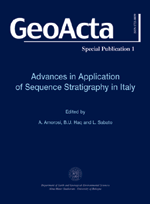Anup R. Gujar1, Nimalanathan Angusamy2 and Gyanmanickam V. Rajamanickam3
1National Institute of Oceanography, Dona Paula, Goa, India – 403 004
2Dept. of Earth Sciences, Tamil University, Thanjavur, India – 613 005
3Disaster Management, SASTRA Deemed University, Thanjavur, India – 613 402
|
|
|
Wave refraction patterns and their role in sediment redistribution along South Konkan, Maharashtra, India
|
|
|
|
|
|
|
|
PDF (3,6 MB)
|
Abstract
Wave refraction studies were undertaken for the nearshore sediments of four bays, Wada Vetye, Ambolgarh, Rajapur and Vijaydurg along the Konkan coast, Maharashtra, Central west coast of India, to understand the effect of wave dynamics in sediment redistribution. From the wave refraction patterns, wave convergent zones are identified at Wada Vetye North end, Ambolgarh promontory and Vijaydurg southern end, which are marked by strong erosional activities. In contrast, Ambolgarh, Vijaydurg and Wada Vetye bays are dominantly influenced by wave divergent conditions most of the time, leading to the formation of depositional landforms like tombolo at Ambolgarh bay, sand bar at Vijaydurg bay and accumulation of mangroves in the estuarine mouth of Vagotan river. The wave convergent zones are marked by cliffed rocky coastline. Erosional processes by wave convergence at various headlands have led to the deposition of sediments removed from the promontories in Vijaydurg, Ambolgarh and Wada Vetye bays.
Keywords: Wave refraction, Erosion, Deposition, Konkan, West coast of India
|
|


